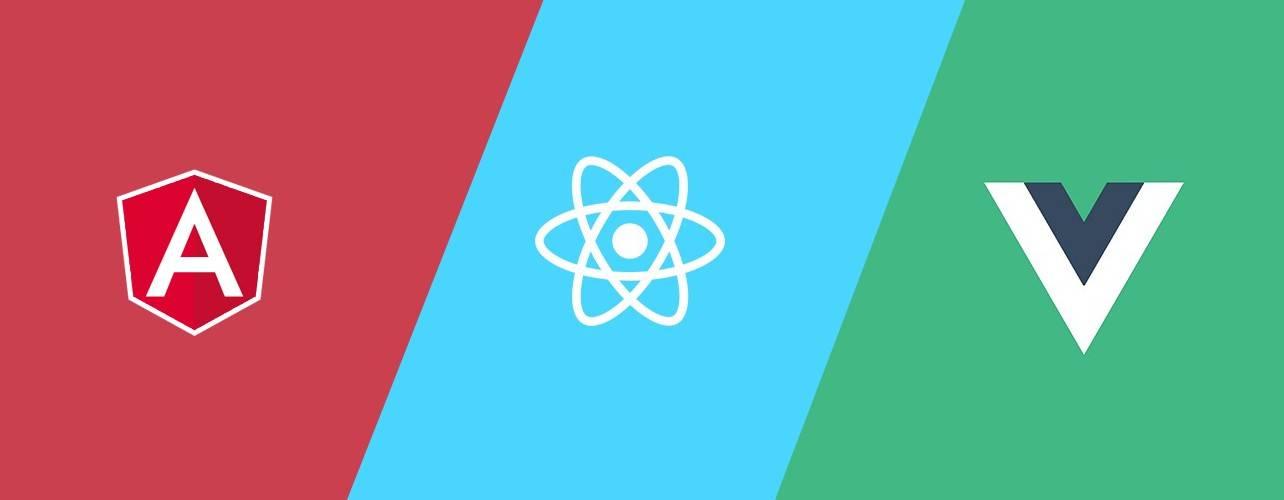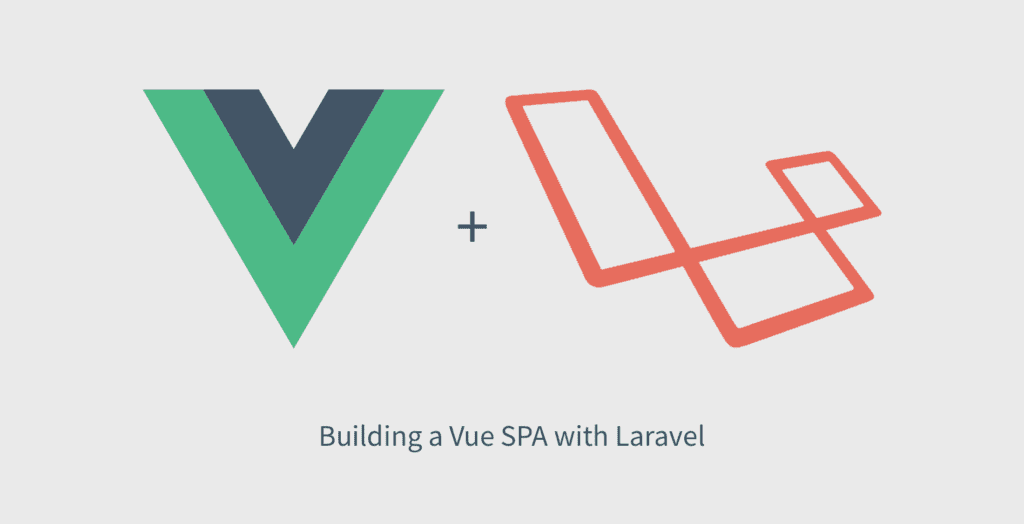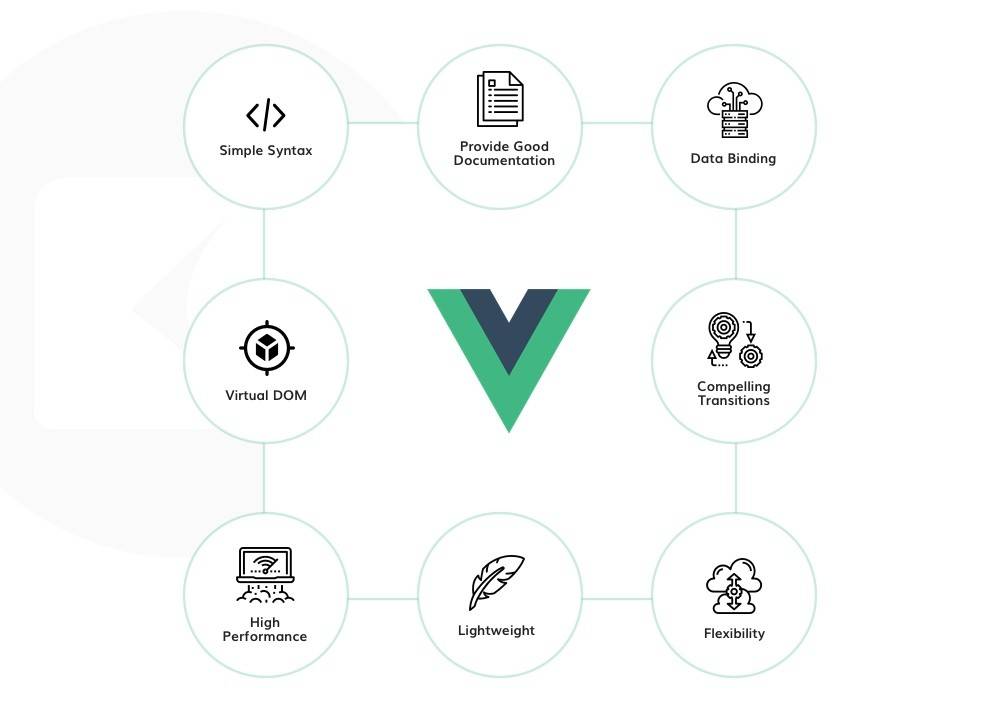Laravel with React.js Vs Angular.js Vs Vue.js

Developers today enjoy plenty of choices when it comes to front-end development frameworks. Most of these frameworks have a huge community supporting them, making the choice all the more difficult.
For instance, React.js is supported by Facebook, Angular.js framework is supported by Google, and Vue.js is the official front-end framework for Laravel – a robust web application framework with an expressive, elegant syntax. While the first two among these (React.js & Angular.js) are the most commonly used frameworks, Vue.js is a relatively new but very promising framework for developing both enterprise apps and single-page applications (SPAs).
In this blog, we compare these three popular front-end technologies (Angular.js, React.js, and Vue.js) and breaks down each framework based on factors such as advantages and limitations, framework philosophies, syntax, popularity, and more, so that you get a feel of which one feels right for you and works best with Laravel.
Angular.js
Angular is a well-known front-end framework that specializes in building rich single-page applications. Among the key highlights of Angular.js include –
- Model-View-Controller architecture
- Two-way data binding to reduce development time
- Features directives to allow developers to assign special behaviors to the Document Object Model (DOM) and create dynamic and rich content with HTML
- Recent versions of Angular.js offer robust error-handling features
Downsides
- The framework offers limited resources for routing
- The debugging in Angular.js may prove difficult at times
- The developers generally find it hard to integrate third parties
React.js
React is essentially a front-end JavaScript library that was developed by Facebook in 2013 for its user interface. It is a powerful library mainly used for the single page web or mobile application development. The other highlights –
- React.js is based on JavaScript and JS and makes it easier to build dynamic UIs since you can develop reusable HTML elements.
- React uses Redux, a predictable state container for JavaScript apps that enables programmers to write applications that can run in different environments – client, server, or native.
- React has a one-directional data-binding approach resulting in a stable code-base.
Downsides
- The JavaScript extension syntax or JSX in React.js is not preferred by many web developers due to the complexity and steep learning process.
- There are new tools and documents that are frequently released with React, and they make it difficult for the developers to know what the codes are.
- The architecture of React undergoes plenty of frequent changes.
Vue.js
Vue.JS is an advanced JavaScript framework that was primarily built for designing UI and single-page applications. It is an open-source JavaScript framework with an adaptable architecture and a key focus on component composition and declarative rendering. The following are the key highlights of Vue.js –
- Features virtual DOM that allows a copy to be created for all modifications done in Vue.
- Offers a range of HTML-based templates that bind the DOM with Vue instance data. Vue.js then compiles these templates into Virtual DOM render functions.
- Features data binding that helps users manipulate the elements of a webpage using a web browser.
- Vue.js can reuse the components that help you extend the basic HTML elements to encapsulate reusable code.
Downsides
- As Vue is relatively new, knowledge sharing isn’t as advanced
Laravel With React.js Vs Angular.js Vs Vue.js – Final Verdict
While you can use Laravel+Angular.js or Laravel+React.js, you will have to use Laravel and Angular or React as separate projects. In such a case, Laravel will serve as your API, while Angular or React serves as a Single Page Application project that can handle logins and data.
Factually speaking, Vue.js integrates best with Laravel. Apart from creating Vue components to be used similar to regular HTML tags inside your blade file, it also allows you to pass props to the element from the output generated when your blade file renders.
Still not convinced?
Let’s explore some more reasons why you should use Laravel+Vue.js together!

While Vue.js and Laravel both originate from different programming languages, Vue.js surprisingly supports Laravel in multiple ways!
- Offers reactive components that make for an excellent event-driven app
Vue.js allows you to build a full-scale app that has all activity completely handled on the frontend. It also offers various composable components to be used as per your requirement.
Because it works well with Laravel, you’d require very little effort to request data from your Laravel application and to make the necessary UI changes by switching components without necessarily reloading the page.
- Everything is done on the frontend
Most of the applications today are event-driven and are built to give users a seamless experience similar to an application installed on computers.
Leveraging full-stack development with Laravel Vue.js, you can ensure that everything happens on the frontend and users wouldn’t be required to reload the page.

- Allows you to build optimal complex frontend pages
When you need to build an application with parts that need frequent updates, you generally have to make the frontend run completely on JavaScript. But the challenge with plain JavaScript or other JavaScript libraries without virtual DOM is that you encounter various performance issues with the volume of data or the frequency of updates.
But when you compose your application with Vue.js components, you’re able to automatically track each component’s dependencies during its render, so the system exactly knows which component needs updates when there is a data change, thereby improving the application efficiency.
In addition to this, Vue is also compatible with Flux and Redux, which are excellent in managing data flow in complex applications.
- Simple to learn and use
Another reason to use Laravel Vue full-stack development is its ease of use. It allows you to make a simple application with plain JavaScript that remains very much valid in Vue. Some other advantages of Vue.js include –
- The ability to either keep your CSS external or process it with JavaScript based on application needs.
- It allows you to take advantage of scoped styling to be able to apply various style changes to a single component without the change affecting other components.
In Conclusion,
Compared to Angular.js and React.js, integrating Laravel and VueJS can help you get the best of both worlds. Both Laravel and Vue.js frameworks separately contribute to some of the major web applications in the world, and bringing them together can bring phenomenal results in the application development space.
Apart from the above benefits, you can easily trigger UI changes that are seamless with your Vue frontend to give your users an exceptional experience. Given Laravel’s expertise and Vue’s speed and performance, this happens smoothly and quickly without eating up much of your computing resources.
If you’re also looking to build powerful applications using Laravel+Vue.js, it is best to hire a qualified Laravel partner such as Cubet, offering top-notch Laravel development services and consulting. We have the requisite expertise and many years of industry experience in building powerful enterprise apps, API, and Single Page Applications (SPAs) from scratch.